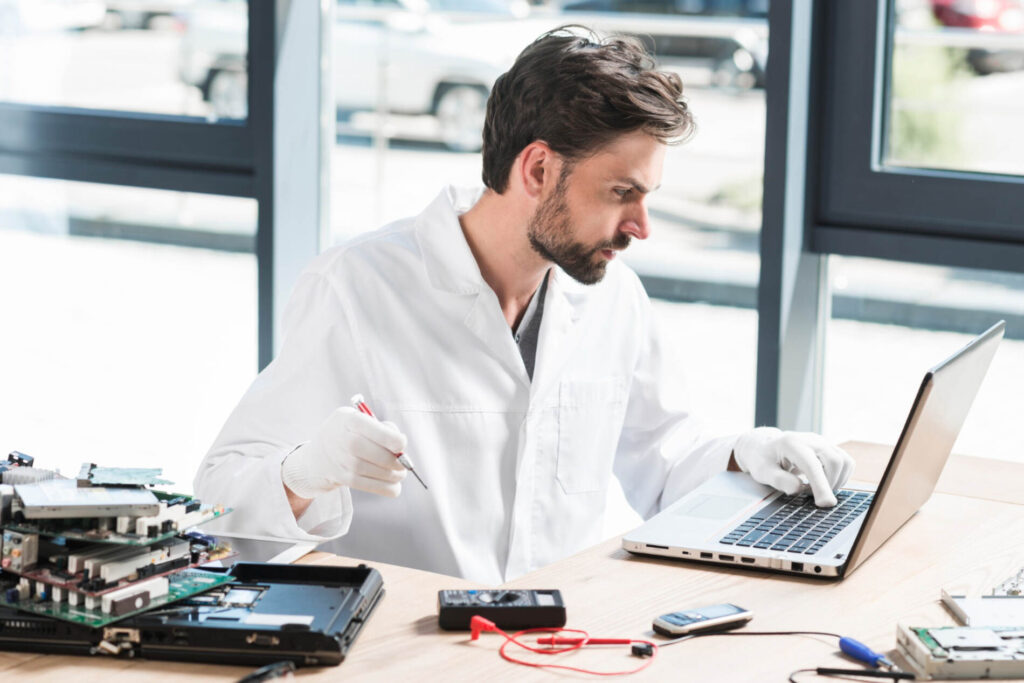Behind every successful engineering team is a well-run lab—a place where innovation becomes reality. But maintaining that space is no small task. From managing installations and repairs to tracking equipment and aligning with facilities teams, lab management services play a mission-critical role in keeping everything running smoothly.
Whether in a product R&D lab, academic research center, or enterprise innovation hub, effective lab management is more than just upkeep—it’s a strategic function that ensures engineers can focus on what they do best: solving problems and building the future.
Here are the best practices for managing modern engineering lab services effectively.
1. Establish Clear Lab Operations Protocols
Day-to-day lab operations need structure without friction. A standardized set of protocols ensures efficiency:
- Create a centralized lab operations manual that outlines responsibilities, access procedures, safety guidelines, and escalation paths.
- Define SOPs (Standard Operating Procedures) for common tasks like equipment checkouts, new device setup, and emergency shutdowns.
- Use workflow management tools (like Jira, ServiceNow, or custom ticketing systems) for task tracking and transparency.
Clarity and consistency reduce downtime and improve cross-team communication.
2. Streamline Installation and Configuration Services
Installing and configuring hardware, software, and test benches can’t afford delays:
- Maintain an installation playbook with documentation templates, configurations, and test procedures for repeatable setups.
- Assign dedicated lab support engineers or technicians for initial setups and upgrades.
- Pre-stage hardware builds and firmware loads to reduce deployment time.
- Document every install for traceability, including dependencies and calibrations.
Faster, standardized installations boost engineering velocity and reduce errors.
3. Implement a Proactive Break/Fix Support Model’
Hardware and systems will fail—it’s how you respond that matters.
- Offer tiered support levels (Level 1 for diagnostics, Level 2 for hardware swap/repair).
- Maintain an on-site parts cache or hot spares for mission-critical tools and boards.
- Use predictive maintenance with logs, telemetry, and wear tracking to prevent common failures.
- Keep a repair ticketing system with SLA tracking and automated notifications.
Speedy issue resolution is the backbone of lab reliability.
4. Centralize Lab Logistics and Inventory Management
Poor inventory control leads to delays, lost tools, and budget overruns. Best practices include:
- Implement a lab inventory management system (LIMS) to track tools, components, and consumables by serial number and location.
- Integrate barcode or RFID scanning for check-in/check-out and shipment tracking.
- Maintain a buffer stock of high-use items, test cables, and components.
- Automate purchase order workflows for restocking or warranty replacements.
Visibility into inventory reduces waste, shrinkage, and procurement headaches.
5. Use Smart Asset Management Practices
Assets in an engineering lab can range from laptops and oscilloscopes to FPGAs and robotic arms. Keep control with:
- Asset tagging using QR codes or RFID for real-time tracking.
- Lifecycle management (procurement → calibration → decommissioning).
- Integration with CMMS (Computerized Maintenance Management Systems) or asset-tracking software.
- Regular audits and compliance reviews, especially in regulated industries.
Smart asset management ensures your lab stays audit-ready and cost-efficient.
6. Build Strong Collaboration with Facilities Teams
Engineering labs depend heavily on the physical environment—power, cooling, HVAC, ventilation, and security. A strong partnership with facilities is essential:
- Schedule joint planning meetings for space design, retrofits, and infrastructure needs.
- Use shared dashboards for alerts (e.g., temperature deviations, utility outages).
- Coordinate on equipment moves, electrical upgrades, or air handling changes.
- Include facilities in lab setup and teardown SOPs.
Facilities and lab operations should function as one unified team to prevent costly surprises.
7. Enable Real-Time Visibility and Communication
Everyone from engineers to lab managers to IT and facilities should stay informed:
- Deploy digital signage, dashboards, or Slack integrations for announcements, outage alerts, or tool status.
- Use IoT sensors and lab monitoring systems to track environmentals (temperature, humidity, vibration).
- Provide a single point of contact or service desk for issue reporting and updates.
Visibility builds trust and reduces downtime from unclear ownership or response gaps.
8. Create a Lab Service Culture of Responsiveness and Excellence
It’s not just about equipment—it’s about people. Lab support teams should:
- Be trained in customer service principles, not just tech skills.
- Conduct regular feedback sessions with engineers to learn pain points and improve.
- Document success metrics (e.g., ticket closure times, install times, asset utilization) to showcase performance.
- Promote a culture of safety, curiosity, and operational excellence.
When lab services feel like an extension of the engineering team—not a gatekeeper—everyone wins.
Conclusion
Engineering lab management isn’t just a backend function—it’s an enabler of innovation. By embracing best practices in installation, support, logistics, and asset control—while building strong partnerships with facilities—labs become high-functioning ecosystems.
In a world where time to market and product quality are everything, having a proactive, professional lab operations model is no longer optional—it’s a competitive advantage.

